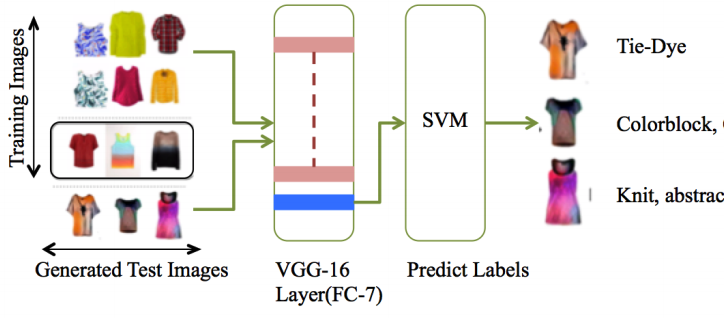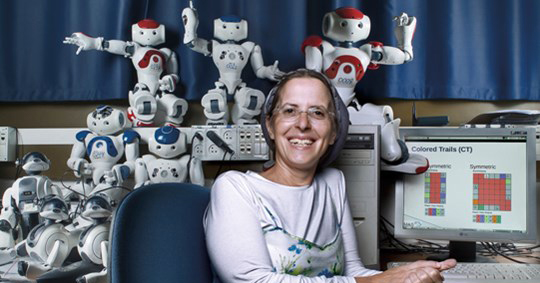
Voices in AI – Episode 20: A Conversation with Marie desJardins
Byron Reese interviewed UMBC CSEE Professor Marie desJardins as part of his Voices in AI podcast series on Gigaom. In the episode, they talk about the Turing test, Watson, autonomous vehicles, and language processing. Visit the Voices in AI site to listen to the podcast and read the interview transcript.
Here’s the start of the wide-ranging, hour long interview.
Byron Reese: This is Voices in AI, brought to you by Gigaom. I’m Byron Reese. Today I’m excited that our guest is Marie des Jardins. She is an Associate Dean for Engineering and Information Technology as well as a professor of Computer Science at the University of Maryland, Baltimore County. She got her undergrad degree from Harvard, and a Ph.D. in computer science from Berkeley, and she’s been involved in the National Conference of the Association for the Advancement of Artificial Intelligence for over 12 years. Welcome to the show, Marie.
Marie des Jardins: Hi, it’s nice to be here.
I often open the show with “What is artificial intelligence?” because, interestingly, there’s no consensus definition of it, and I get a different kind of view of it from everybody. So I’ll start with that. What is artificial intelligence?
Sure. I’ve always thought about artificial intelligence as just a very broad term referring to trying to get computers to do things that we would consider intelligent if people did them. What’s interesting about that definition is it’s a moving target, because we change our opinions over time about what’s intelligent. As computers get better at doing things, they no longer seem that intelligent to us.
We use the word “intelligent,” too, and I’m not going to dwell on definitions, but what do you think intelligence is at its core?
So, it’s definitely hard to pin down, but I think of it as activities that human beings carry out, that we don’t know of lower order animals doing, other than some of the higher primates who can do things that seem intelligent to us. So intelligence involves intentionality, which means setting goals and making active plans to carry them out, and it involves learning over time and being able to react to situations differently based on experiences and knowledge that we’ve gained over time. The third part, I would argue, is that intelligence includes communication, so the ability to communicate with other beings, other intelligent agents, about your activities and goals.
Well, that’s really useful and specific. Let’s look at some of those things in detail a little bit. You mentioned intentionality. Do you think that intentionality is driven by consciousness? I mean, can you have intentionality without consciousness? Is consciousness therefore a requisite for intelligence?
I think that’s a really interesting question. I would decline to answer it mainly because I don’t think we ever can really know what consciousness is. We all have a sense of being conscious inside our own brains—at least I believe that. But of course, I’m only able to say anything meaningful about my own sense of consciousness. We just don’t have any way to measure consciousness or even really define what it is. So, there does seem to be this idea of self-awareness that we see in various kinds of animals—including humans—and that seems to be a precursor to what we call consciousness. But I think it’s awfully hard to define that term, and so I would be hesitant to put that as a prerequisite on intentionality.









